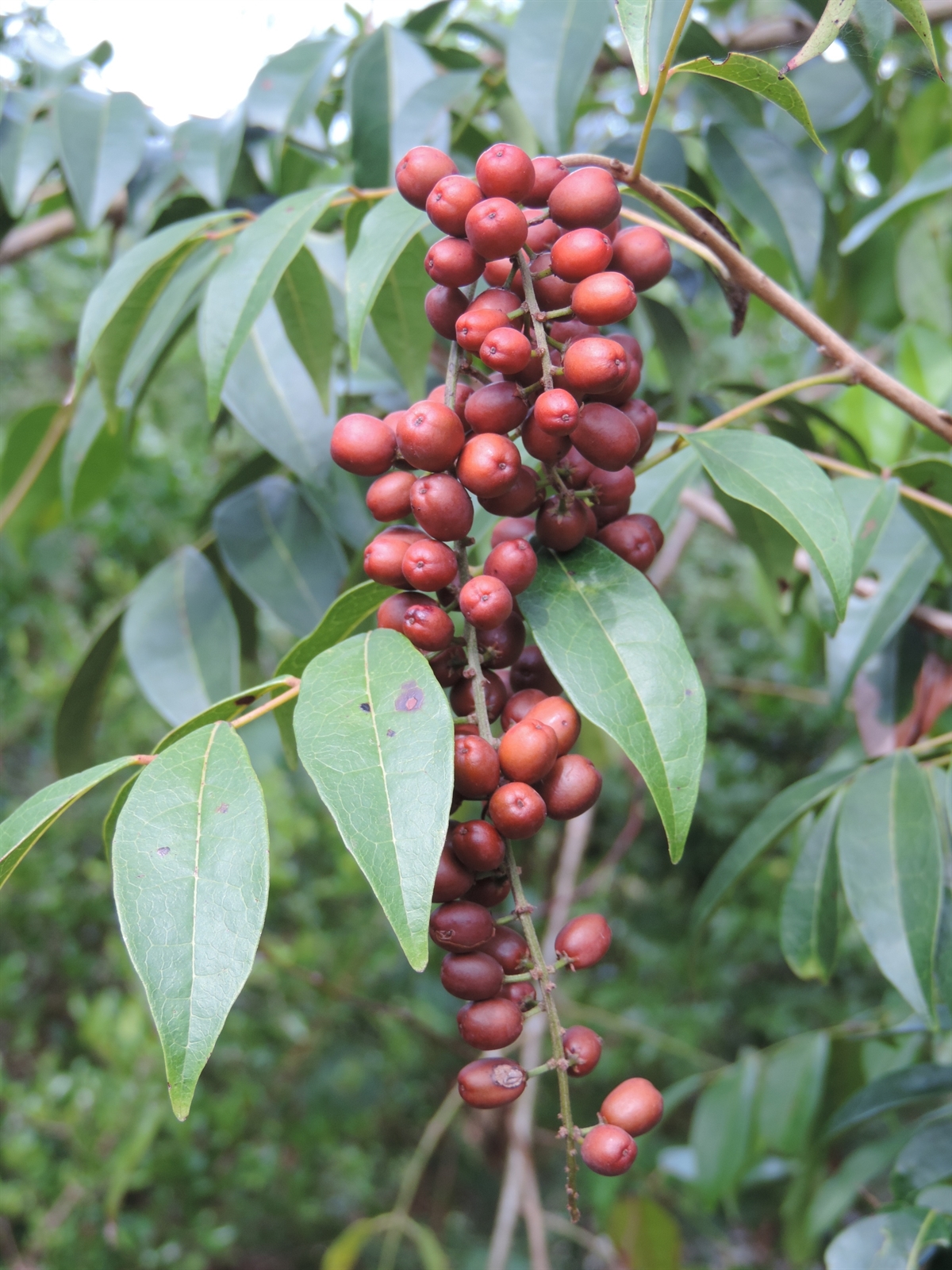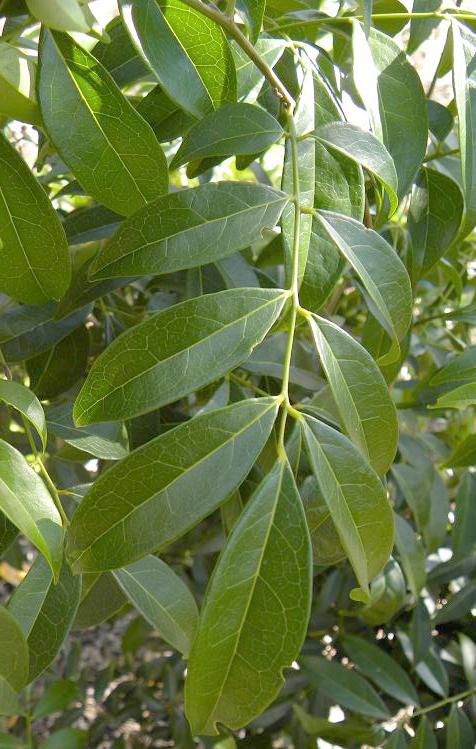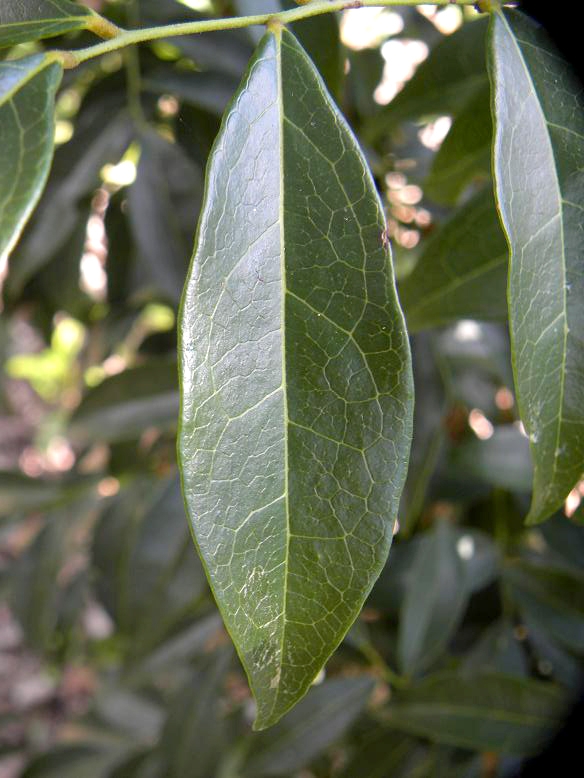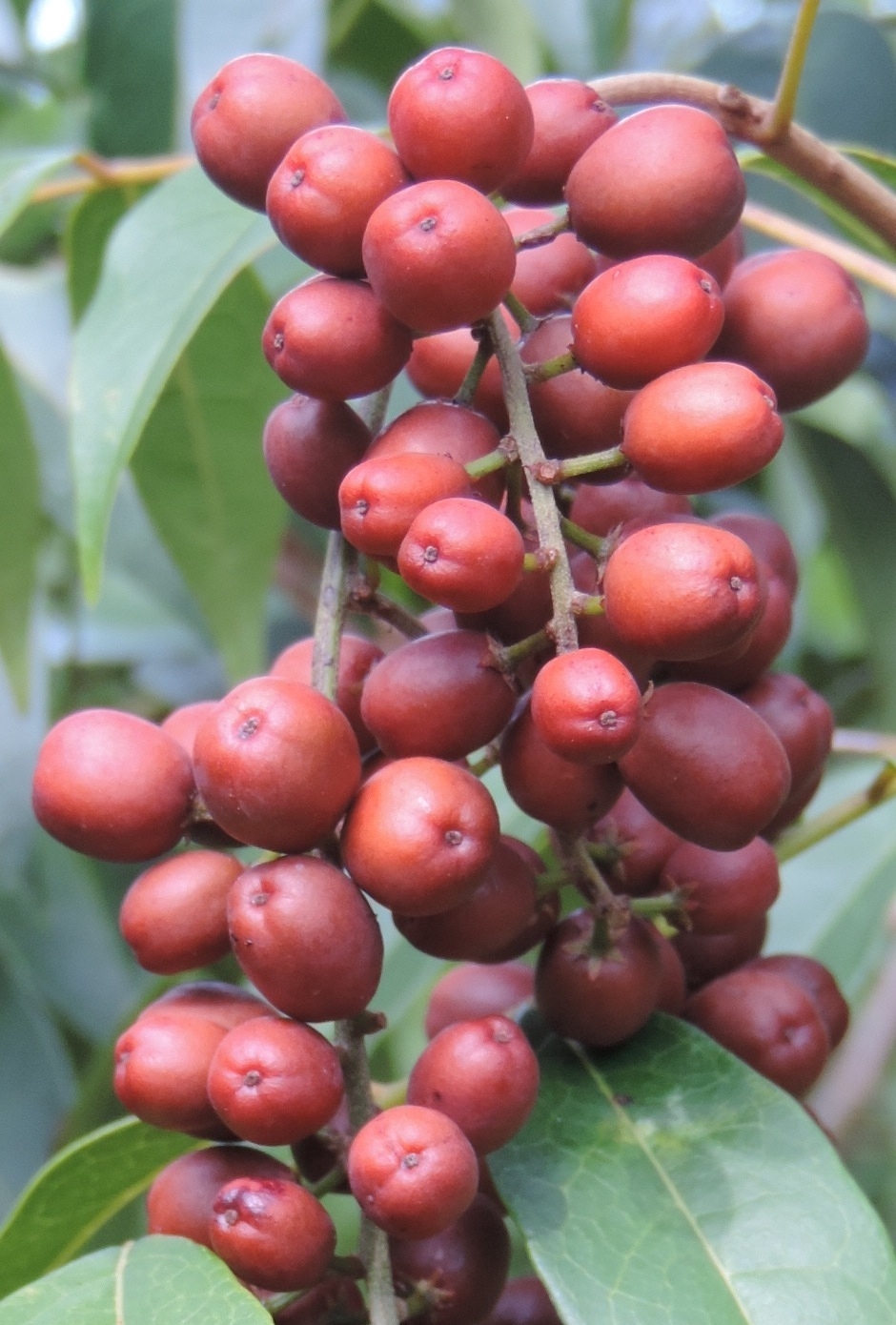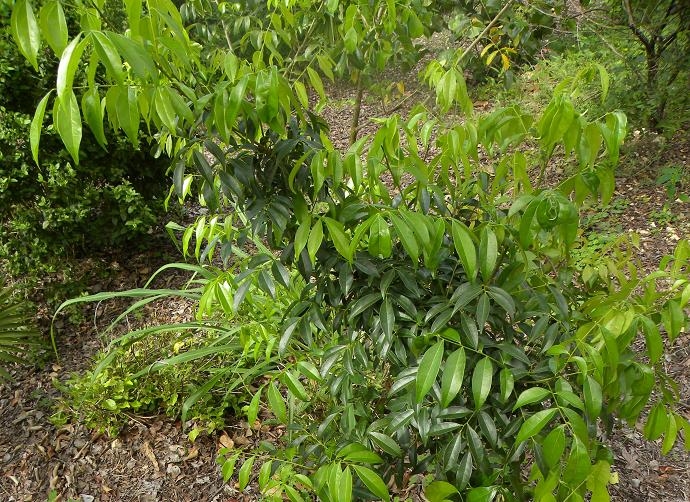Habit: Picramnia pentandra grows as a large shrub to small tree up to 10 meters in height, (typically 2-4 meters) and to 15 cm in diameter. The compound leaves are arranged alternately and are odd-pinnate with 5 – 9 leaflets. The leaflets are alternate on the rachis, ovate to lanceolate, to 12 cm in length (usually less than 8 cm), with an acute/acuminate or slightly obtuse leaf apex and entire leaf margin. The leaflets are reddish during development.
Picramnia pentandra is dioecious. The incomplete, imperfect, actinomorphic flowers are arranged in panicles of racemes. The perianth is covered with short pubescence. The calyx has 5 unfused green sepals. The corolla has 5 unfused green petals. Staminate flowers have 5 unfused stamens and a non-functional ovary. Carpellate flowers have 5 non-functional stamens and a superior ovary with 2 locules and numerous seeds. The fruit is a berry that turns red at maturity.
Habitat: Picramnia pentandra grows as an understory shrub in Dry Broadleaf Evergreen Formations – Forests (tall coppice) typically in and around sinkholes and depressions.
Distribution: Picramnia pentandra occurs throughout the island groupings of the Lucayan Archipelago as well as Florida, the Caribbean region and the northern portions of South America.
Medicinal/Cultural/Economic usage: Picramnia pentandra is used extensively for bush medicine in the Lucayan Archipelago. It is used to treat colds and flu, dermatological problems, gastrointestinal issues (increasing appetite and induce vomiting), in OB/GYN care, general strengthening teas and respiratory illnesses. It has also been used to treat cancer.
Picramnia pentandra is used in the horticultural industry for its ability to grow in low light situations.
